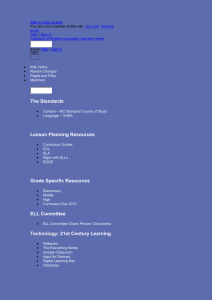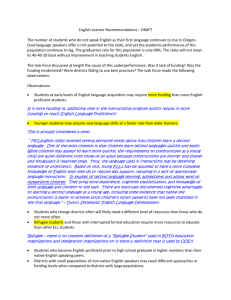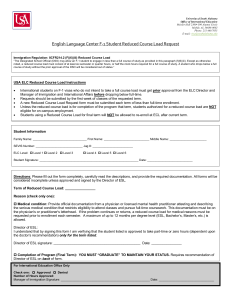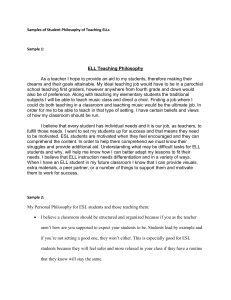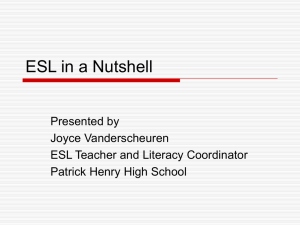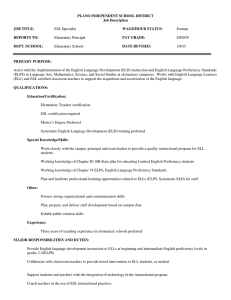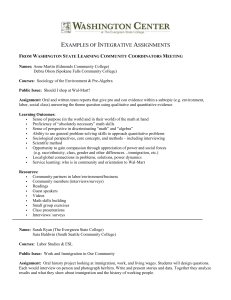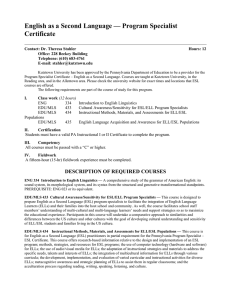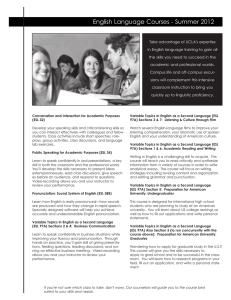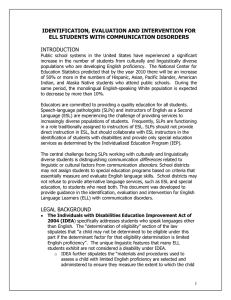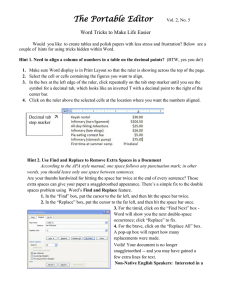Culture & Language Issues in the Classroom:
advertisement
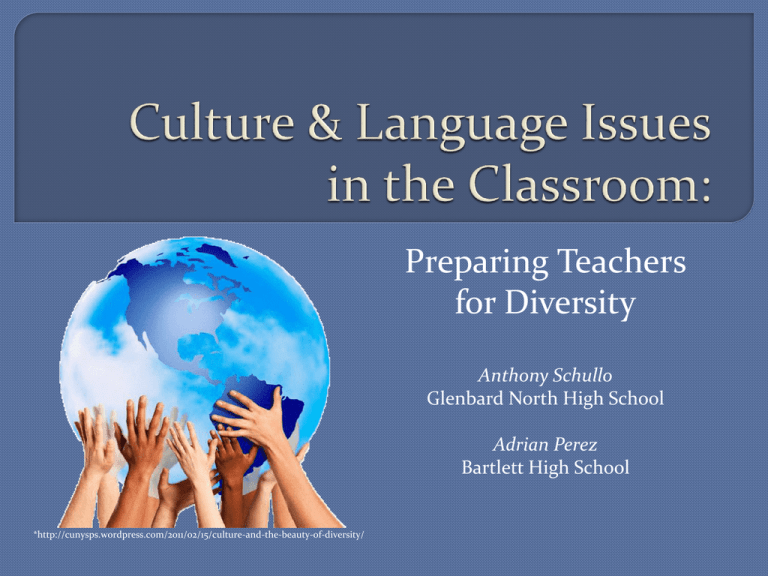
Preparing Teachers for Diversity Anthony Schullo Glenbard North High School Adrian Perez Bartlett High School *http://cunysps.wordpress.com/2011/02/15/culture-and-the-beauty-of-diversity/ 3 0 1. 2. 3. 4. A. 74% B. 26% C. 42% D. 15% 0% 0% 0% 2 3 0% 0 1 4 Immigration Act of 1965: ended all quotas. Immigrants today: - Central Asia (40%) - Asia (25%) - Caribbean (10%) http://salempress.com/store/samples/us_immigration_history/us_immigration_history_history.htm Influenced by respective cultures. - Trends with Asian American students. Values complement learning. Examples? http://poplicks.com/2006/11/greatest-asian-american-hero.html Fear of new language; dropping old language. Creation of distance from parents. Minorities fear that being a good student means becoming “White”. Examples? http://www.cartoonstock.com/directory/c/cultural_diversity.asp 1. 2. 3. 4. http://www.jaha.org/edu/discovery_center/push-pull/peopling_pa01.html History of assimilation (conforming to the social norms). Multi-cultural education = the variety of strategies used to teach students of different cultures. The Goals: Recognizing Valuing Utilizing Linking *Teachers respond using methods of culturally responsive teaching* Students must know that you care by: - Devoting time to students - Demonstrating interest in student’s life - Involving all students in learning activities http://www.uh.edu/engines/epi2513.htm Accommodation without assimilation. The challenge? - Teachers must help students learn the “culture of schooling” including: norms, procedures, and expectation for success. - This MUST be done while honoring and valuing their home culture. http://www.schoolbriefing.com/789/school-improvement-turning-around-low-performing-schools/ How would you build on the diverse background of your students? Non-White groups referred to as the “cultural minority”. Urban centers referred to as “Gateway Cities”. The challenge: teaching students to learn English as well as content. By The Numbers Hispanics, African Americans, and Asians- combined- make up the majority of population in half of the top 100 largest cities in the United States (Macionis, 2009). Minority students make up more than 90% of the student population in Detriot, the District of Columbia, Chicago, Houston, and Los Angeles (Kober, 2006). http://blog.cleveland.com/metro/2010/05/three_cleveland_schools_lauded.html 3 0 1. 2. 3. 4. 0 A. 50 Languages B. 120 Languages C. 605 Languages D. 440 Languages 0% 1 0% 0% 2 3 0% 4 http://www.meridianschools.org/Parents/ELL/Pages/ELL.aspx ELLs (English Language Learners) – students whose first language is something other than English and need assistant in reading, writing, and speaking in English. Approaches to ELL students include: - Bilingual maintenance language programs - Immersion programs - Transition programs - ESL (English as a Second Language) 1968: Bilingual Education Act 1974: Lau v. Nichols English Acquisition portion of NCLB. Presently moving away from the preservation of native languages. http://en.wikipedia.org/wiki/File:No_Child_Left_Behind_Act.jpg Using their first language while teaching English. Students received a great amount of instruction in their native language. Gradually assimilates them to English classes. http://www.kidactivities.net/category/DiversityMulti-Cultural-Book-List.aspx Emphasizes rapid transition to English. ESL is the most popular in schools that includes: - Content-based ESL OR - Pull-out ESL http://www.teachersofcolor.com/2009/04/incorporating-cultural-diversity-in-the-classroom/ Maintain their native languages until students acquire skills to succeed in an all-English setting. The goal: proficiency! http://www.ehow.co.uk/how_7716425_address-diversity-classroom.html
